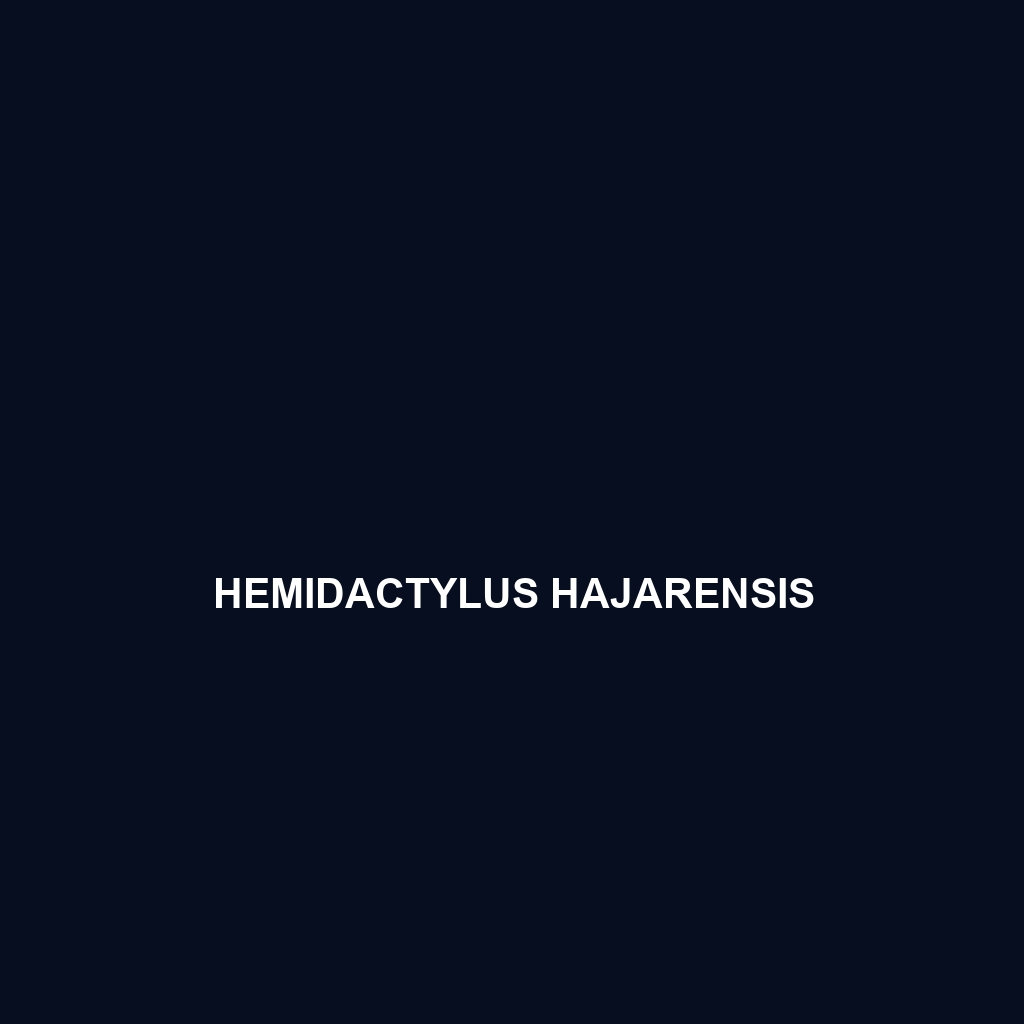Common Name
Hemidactylus hajarensis
Scientific Name
Hemidactylus hajarensis
Habitat
The Hemidactylus hajarensis, commonly known as the Hajar Geckos, is primarily found in the mountainous regions of the Hajar Mountains in Oman and the United Arab Emirates. This species thrives in a variety of habitats, including rocky outcrops and dry, arid savannas, characterized by minimal vegetation and irregular water availability. The climate of its range is typically dry with occasional rain, supporting a unique ecosystem that fosters diverse flora and fauna. Additionally, Hemidactylus hajarensis may also inhabit temperate forests, where the microhabitats provided by tree bark and crevices offer suitable shelters. These geckos are adept at adapting to diverse environmental conditions, allowing them to survive in various geographic regions within their range.
Physical Characteristics
Hemidactylus hajarensis exhibits distinct physical traits that make it easily identifiable. Typically, adult geckos measure about 8-12 cm in length, with a slender body and a long, prehensile tail. The coloration varies from light brown to gray, often featuring darker mottling that provides effective camouflage against rocky substrates. Unlike many other gecko species, Hemidactylus hajarensis has well-defined toe pads which enhance its climbing abilities, allowing it to navigate its rocky environment efficiently. The skin texture is rough with small tubercles, which contribute to its unique appearance as well. Its large eyes are notable, providing excellent vision during its nocturnal foraging activities.
Behavior
The behavior of Hemidactylus hajarensis is fascinating, particularly its nocturnal habits. These geckos are most active at night, utilizing their excellent vision to hunt for food and avoid predators. Socially, Hemidactylus hajarensis is generally solitary but may congregate in suitable habitats with abundant food sources. During mating rituals, males display territorial behaviors, including vocalizations and physical displays to attract females. Its adaptability is evident in its ability to navigate various surfaces with ease, allowing it to evade threats efficiently. Additionally, their tail may detach when threatened, a defensive mechanism that provides them an escape route while the predator is distracted.
Diet
Hemidactylus hajarensis is primarily an insectivore, feeding predominantly on a diverse diet of insects such as crickets, moths, and beetles. Its hunting strategy involves ambushing prey, utilizing its speed and agility to catch insects quickly. In some cases, these geckos may also consume small spiders or other minor invertebrates. The dietary habits of Hemidactylus hajarensis reflect its role in controlling insect populations within its habitat, thus contributing to ecological balance.
Reproduction
The reproductive cycle of Hemidactylus hajarensis typically commences during the warmer months, coinciding with the increased availability of food sources. Female geckos are known to lay two eggs at a time, which they deposit in hidden crevices or under rocks to protect them from predators. The incubation period lasts about 6-8 weeks, after which hatchlings emerge, measuring about 4-5 cm in length. Parental care is minimal, as the young are independent from birth and must fend for themselves. This reproductive strategy ensures that the species can sustain its population even in challenging environmental conditions.
Conservation Status
Currently, the conservation status of Hemidactylus hajarensis is categorized as Least Concern according to the IUCN Red List. However, ongoing habitat destruction due to urban development and climate change poses potential threats to their population stability. Conservation efforts to preserve their natural habitats are vital, as they play an essential role in their ecosystem. Monitoring populations and establishing protected areas may help mitigate these threats and ensure their survival in the wild.
Interesting Facts
One of the most intriguing aspects of Hemidactylus hajarensis is its ability to glide short distances, thanks to its flattened body shape and elongated toes. This adaptation aids in navigating the rocky terrains of its habitat. Furthermore, these geckos exhibit color changes when threatened, altering their hues to blend in with their surroundings more effectively. Such adaptations make Hemidactylus hajarensis a remarkable species that exemplifies the intricate relationships between organism adaptations and survival.
Role in Ecosystem
As a predator, Hemidactylus hajarensis plays a crucial role in maintaining the balance of insect populations within its ecosystem. By feeding on various insects, these geckos help control pest species, thereby promoting a healthier environment. Additionally, they serve as prey for larger predators, contributing to the food web. Their presence in rocky habitats also indicates ecological health, as these environments require a diversity of species to remain stable. Overall, Hemidactylus hajarensis holds a valuable position within its ecosystem, underlining the need for its conservation and the preservation of its natural habitats.
